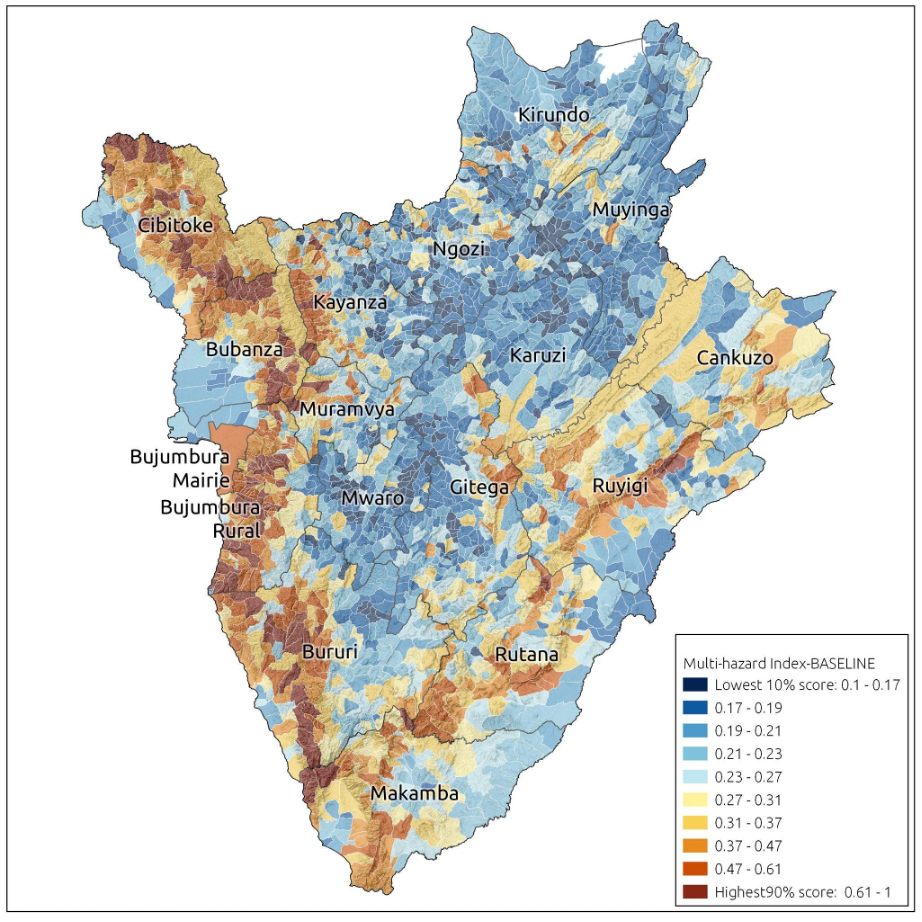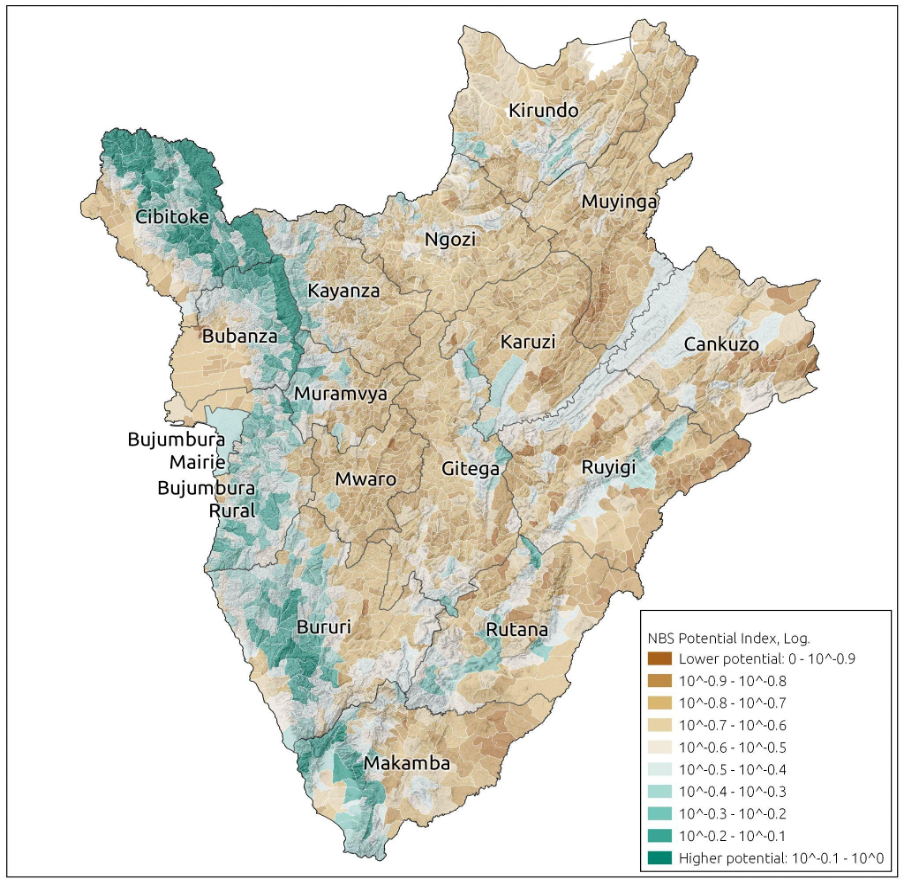Stanford Natural Capital Project et al., (2021) created a composite index showing landslide and soil erosion hotspots at colline-level. As in Figure 23, the composite score is a function of erosion and landslide risk, transportation infrastructure risk, food production and livelihoods risk, and population settlements risk. In the composite index map, the dark brown areas are those where most of the contributing hazards are high and increasing. In response, they also highlighted opportunity areas for nature-based solutions to mitigate risks of erosion and landslide risk to people, food/livelihoods, and transportation infrastructure (Figure 24). Such practices could include, for example, agroforestry, regenerative food production systems, protected area management, revegetating denuded slopes and riparian areas, and protecting existing natural ecosystems.

Figure 23. - Multi-hazard index score for baseline, displayed by equal-size percentiles

Figure 24. - Composite index of nature-based solutions potential, showing in green shades collines where investments in improving vegetation cover and landscape management have the greatest impact on mitigating risk factors (erosion, landslides, livelihoods, transportation, and populated settlements)